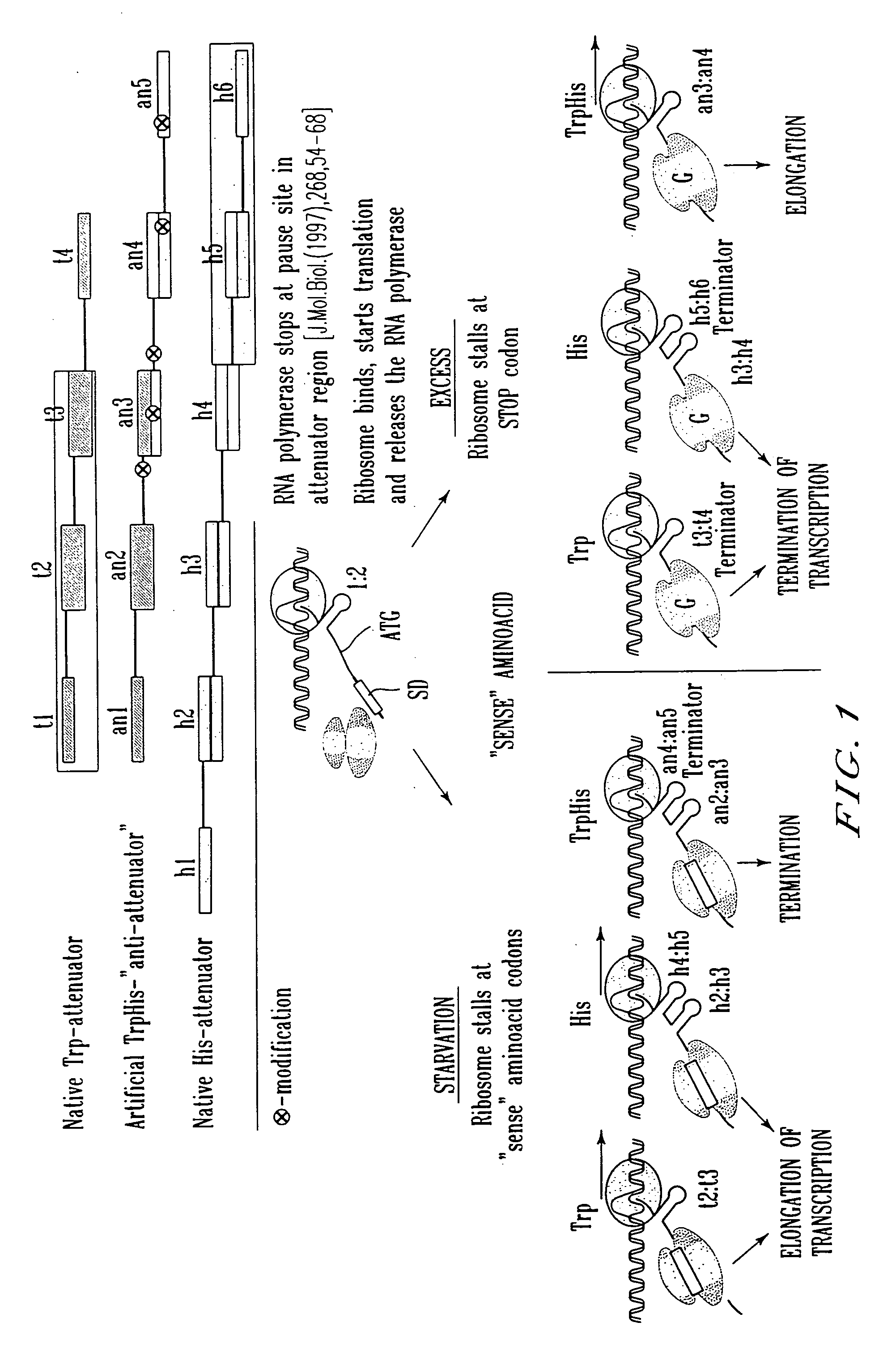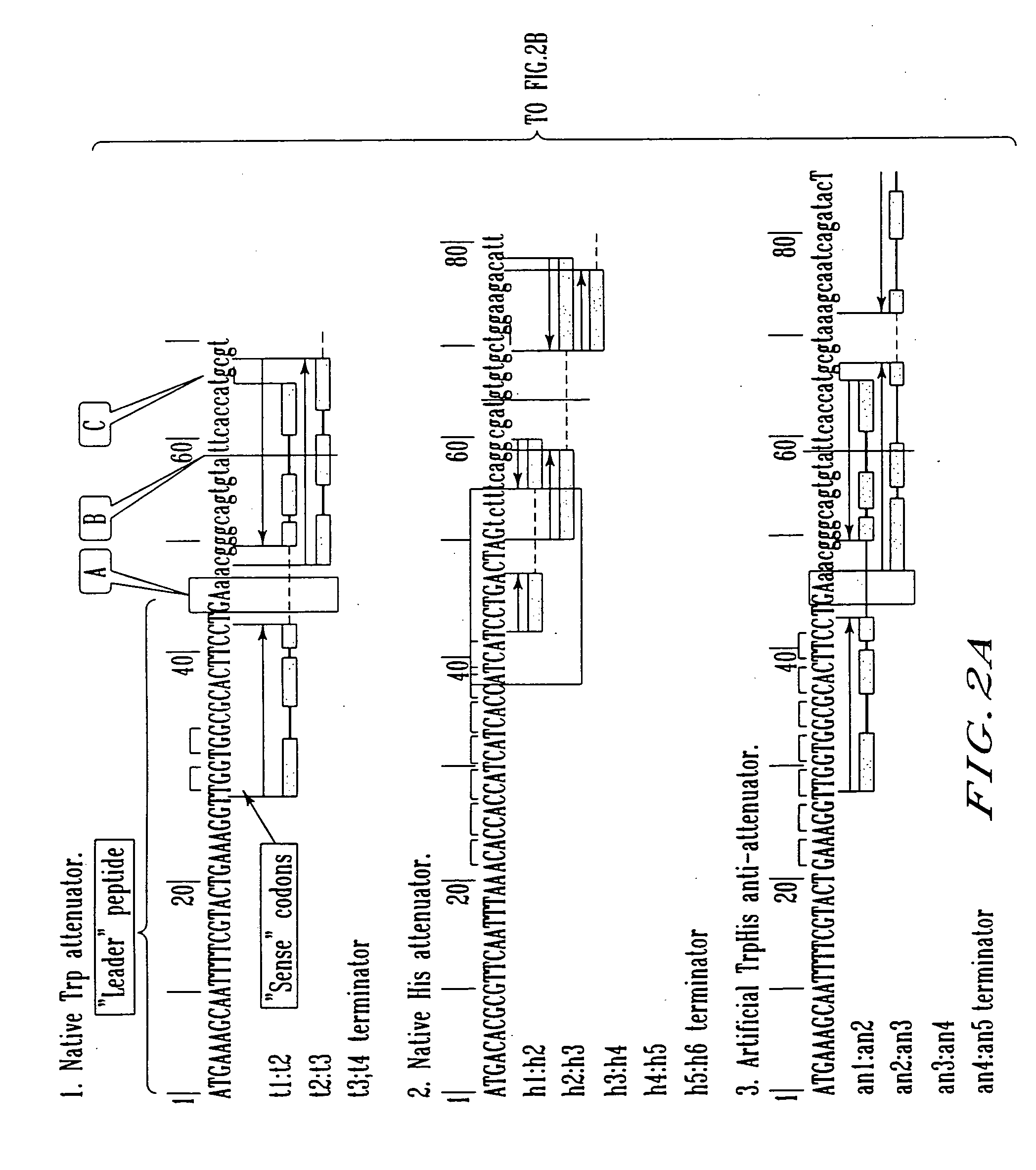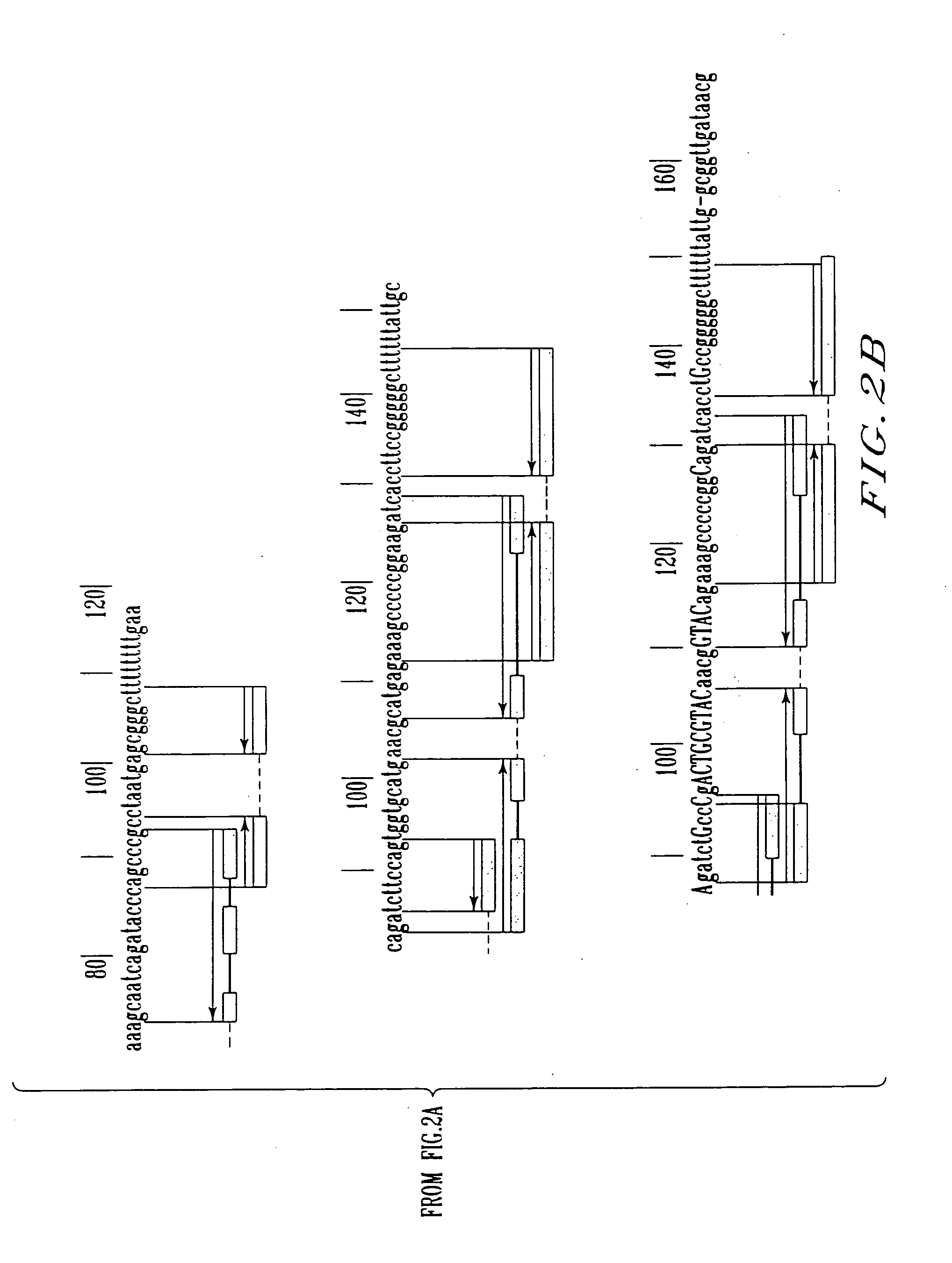Expression control sequence
a technology of expression control and sequence, applied in the microbiological industry, can solve problems such as complicated situations, and achieve the effect of increasing the control of gene expression
- Summary
- Abstract
- Description
- Claims
- Application Information
AI Technical Summary
Benefits of technology
Problems solved by technology
Method used
Image
Examples
example 1
Construction of the Recombinant Plasmids Carrying the Native Attenuator and the Artificial Anti-attenuators and Their Fragments
[0105] 1. Construction of the vector plasmid pML-Ptac-ter_thrL-cat
[0106] The plasmid vector pML-Ptac-ter_thrL-cat carrying a ColE1-like replicon, ApR-gene as a selective marker, the tac promoter (Ptac)(Russel D. R., Bennett G., Gene 20 (1982) 231), synthetic ρ-independent transcription terminator of the leader peptide of the E. coli thr-operon (ter_thrL) and the structural region of cat-gene downstream of Ptac, has been constructed in the following manner. The gene cat transcribing from Ptac, has been used as a reporter in the experiments described below.
[0107] 1.1. Construction of the pML-pp-vector
[0108] Two plasmids were used as the progenitors for pML-pp-vector construction. The first plasmid was the present inventors' previously described plasmid pML24 (Trukhan et al., Biotechnologiya (in Russian) 4, No. 3 (1988) 325-334). The second plasmid was the...
example 2
The Detection of the Accumulation Levels of Cat Protein in Strains Carrying the Recombinant Plasmids With the Native trpL, the Artificial Anti-attenuators and Their Fragments.
[0135] The previously described plasmids (see, Example 1): pML-Ptac-an4:an5-cat, pML-Ptac-an3:an4(an4:an5)-cat, pML-Ptac-trpL-cat, pML-Ptac-anti_att-I-cat, pML-Ptac-anti_att-II-cat were introduced into E. coli TG1 (supE, hsd, thi, Δ(lac-proAB), F′[traD36, proAB+, laclQ, lacZΔM15]) and E. coli B7248 (trpB−:Tn10, StrR) according to the standard experimental protocols with the selection of the plasmid-carrier cells on the medium with the ampicillin (100 μg / ml) addition (Sambrook et al., “Molecular cloning. Laboratory manual”. (1989) Second Edition, Cold Spring Harbor Laboratory Press). The obtained cell cultures were grown in the tubes with the liquid medium at 37° C. with good aeration. As for the cultivation medium, the L-broth with the ampicillin addition was used for the TG1-driven plasmid-carrier strains an...
PUM
| Property | Measurement | Unit |
|---|---|---|
| Concentration | aaaaa | aaaaa |
Abstract
Description
Claims
Application Information
 Login to View More
Login to View More - R&D
- Intellectual Property
- Life Sciences
- Materials
- Tech Scout
- Unparalleled Data Quality
- Higher Quality Content
- 60% Fewer Hallucinations
Browse by: Latest US Patents, China's latest patents, Technical Efficacy Thesaurus, Application Domain, Technology Topic, Popular Technical Reports.
© 2025 PatSnap. All rights reserved.Legal|Privacy policy|Modern Slavery Act Transparency Statement|Sitemap|About US| Contact US: help@patsnap.com



